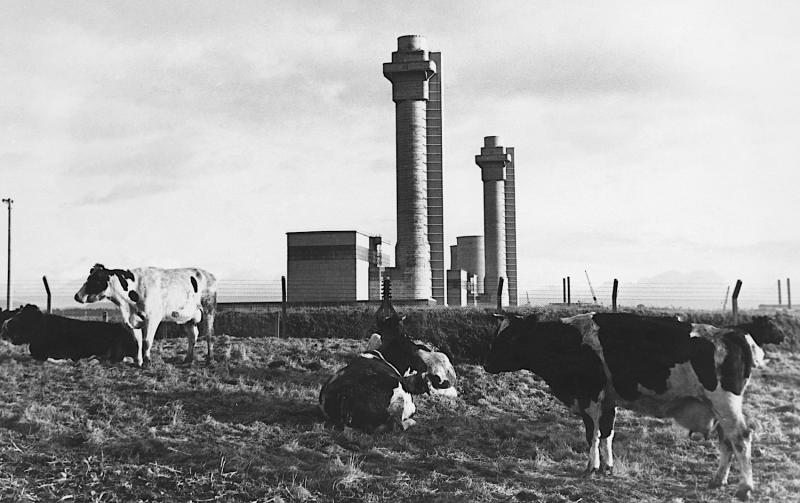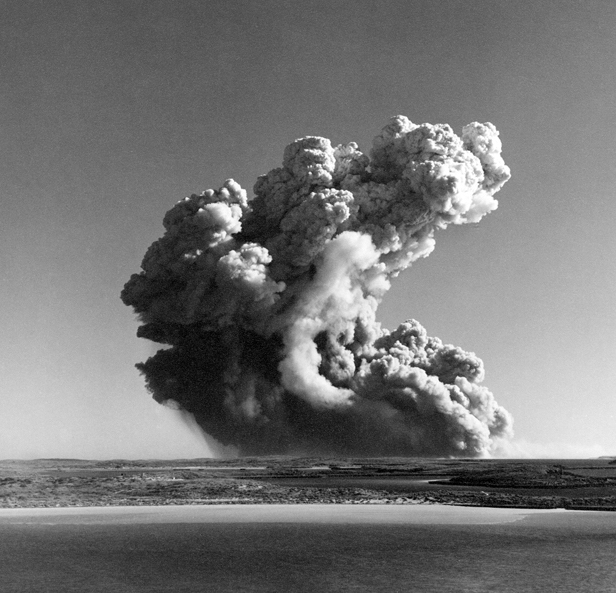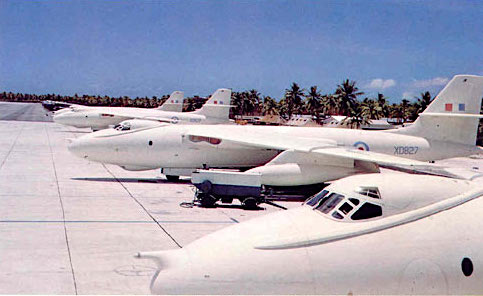Britain's Nuclear Bomb: The Inside Story review - 'power, politics and national identity' | reviews, news & interviews
Britain's Nuclear Bomb: The Inside Story review - 'power, politics and national identity'
Britain's Nuclear Bomb: The Inside Story review - 'power, politics and national identity'
BBC Four tells how Britain battled for a seat at the nuclear top table

In the midst of a general election campaign and with Euro-shrapnel flying around our ears, it’s an intriguing moment at which to revisit Britain’s history as a nuclear power. Although this film from BBC Science concentrated on the factual and technical aspects of building the British atomic and hydrogen bombs, the story was inescapably entwined with power, politics and national identity.
It was the Manchester-based scientist Ernest Rutherford who discovered the atom in 1911, and it was the Cockcroft-Walton generator (developed at Cambridge in the 1930s) which first split the atom – the sons of both Cockroft and Walton appeared here to fill in the background.
 Rudy Peierls and Otto Frisch, Jewish scientists in Britain to escape the Nazis, produced the theoretical groundwork for creating a nuclear explosion using small amounts of uranium. Work on a British bomb proceeded under the “Tube Alloys” banner (based in Rhydymwyn in Wales), but rising costs, plus the fact that the Germans were making ominous progress with their own nuclear weapons, prompted Winston Churchill to agree to let the Americans take over the project, even though they’d been lagging behind the work done in Britain (atomic bomb test at Monte Bello islands, 1952, above).
Rudy Peierls and Otto Frisch, Jewish scientists in Britain to escape the Nazis, produced the theoretical groundwork for creating a nuclear explosion using small amounts of uranium. Work on a British bomb proceeded under the “Tube Alloys” banner (based in Rhydymwyn in Wales), but rising costs, plus the fact that the Germans were making ominous progress with their own nuclear weapons, prompted Winston Churchill to agree to let the Americans take over the project, even though they’d been lagging behind the work done in Britain (atomic bomb test at Monte Bello islands, 1952, above).
As we know, the Manhattan Project, based at Los Alamos in New Mexico, successfully created the bombs dropped on Japan, but the Americans then decided they wanted to keep all the nuclear know-how for themselves. The British team working at Los Alamos had already been excluded from many aspects of the production process, and in 1946 the US McMahon Act banned any sharing of nuclear information with the British. Apparently it was Ernest Bevin, foreign secretary in Clement Attlee’s 1945 Labour government, who clinched the argument that Britain had to develop its own nukes after he’d been humiliatingly patronised by the American Secretary of State.
Whether Britain should have rolled over, accepted that it was no longer a global power and spent its money on something ostensibly more practical was not discussed, but we learned plenty of fascinating detail about the atomic project from surviving veterans. Ken Johnston, former chief scientist at the Aldermaston atomic weapons establishment, explained (“for the first time”, as the voice-over kept reminding us) how the “implosion” system worked (you took a ball of uranium and surrounded it with explosives which all detonated simultaneously, compressing the uranium which duly produced the desired Big Bang). Vic Goodwin, then a trainee boffin at the Windscale nuclear reactor, remembered how he’d had to collect spilled and “intensely radioactive” nuclear fuel with a shovel, and reckoned he’d picked up a radiation dose equivalent to “five old-fashioned chest x-rays”. There was an alarming anecdote about how a Vauxhall car with canisters of plutonium in the back broke down outside a south London pub in the middle of the night (Valiant bombers at H-bomb tests in the Pacific, 1957, below).
 How typical of the British to make creating the deadliest weapons on earth look like an Ealing comedy, yet create them they did. The British atom bomb was successfully detonated at the Monte Bello islands off north-western Australia in 1952. Three weeks later, the Americans spoiled the party by exploding the first H-bomb (which was 400 times more powerful), but the Brits picked themselves up and built an H-bomb of their own (successfully tested in 1957).
How typical of the British to make creating the deadliest weapons on earth look like an Ealing comedy, yet create them they did. The British atom bomb was successfully detonated at the Monte Bello islands off north-western Australia in 1952. Three weeks later, the Americans spoiled the party by exploding the first H-bomb (which was 400 times more powerful), but the Brits picked themselves up and built an H-bomb of their own (successfully tested in 1957).
Professor Bryan Taylor, in charge of the H-bomb project, argued that he was always more concerned with science than with “politics or patriotism”. He considered that “the main aim was that we should not all fall over with egg on our faces.” And, although terror of nuclear war was rising and anti-nuclear protests were becoming widespread, Britain had forced its way into the “nuclear club”, and successfully twisted the arm of the Americans. Having cut off all collaboration after naturalised British scientist Klaus Fuchs was exposed for handing nuclear secrets to the Russians, the Americans signed a new collaborative deal with Britain after its success with the H-bomb. And if they hadn’t? Who knows.
The future of Arts Journalism
You can stop theartsdesk.com closing!
We urgently need financing to survive. Our fundraising drive has thus far raised £49,000 but we need to reach £100,000 or we will be forced to close. Please contribute here: https://gofund.me/c3f6033d
And if you can forward this information to anyone who might assist, we’d be grateful.

Subscribe to theartsdesk.com
Thank you for continuing to read our work on theartsdesk.com. For unlimited access to every article in its entirety, including our archive of more than 15,000 pieces, we're asking for £5 per month or £40 per year. We feel it's a very good deal, and hope you do too.
To take a subscription now simply click here.
And if you're looking for that extra gift for a friend or family member, why not treat them to a theartsdesk.com gift subscription?
more TV
 Murder Before Evensong, Acorn TV review - death comes to the picturesque village of Champton
The Rev Richard Coles's sleuthing cleric hits the screen
Murder Before Evensong, Acorn TV review - death comes to the picturesque village of Champton
The Rev Richard Coles's sleuthing cleric hits the screen
 Black Rabbit, Netflix review - grime and punishment in New York City
Jude Law and Jason Bateman tread the thin line between love and hate
Black Rabbit, Netflix review - grime and punishment in New York City
Jude Law and Jason Bateman tread the thin line between love and hate
 The Hack, ITV review - plodding anatomy of twin UK scandals
Jack Thorne's skill can't disguise the bagginess of his double-headed material
The Hack, ITV review - plodding anatomy of twin UK scandals
Jack Thorne's skill can't disguise the bagginess of his double-headed material
 Slow Horses, Series 5, Apple TV+ review - terror, trauma and impeccable comic timing
Jackson Lamb's band of MI5 misfits continues to fascinate and amuse
Slow Horses, Series 5, Apple TV+ review - terror, trauma and impeccable comic timing
Jackson Lamb's band of MI5 misfits continues to fascinate and amuse
 Coldwater, ITV1 review - horror and black comedy in the Highlands
Superb cast lights up David Ireland's cunning thriller
Coldwater, ITV1 review - horror and black comedy in the Highlands
Superb cast lights up David Ireland's cunning thriller
 Blu-ray: The Sweeney - Series One
Influential and entertaining 1970s police drama, handsomely restored
Blu-ray: The Sweeney - Series One
Influential and entertaining 1970s police drama, handsomely restored
 I Fought the Law, ITVX review - how an 800-year-old law was challenged and changed
Sheridan Smith's raw performance dominates ITV's new docudrama about injustice
I Fought the Law, ITVX review - how an 800-year-old law was challenged and changed
Sheridan Smith's raw performance dominates ITV's new docudrama about injustice
 The Paper, Sky Max review - a spinoff of the US Office worth waiting 20 years for
Perfectly judged recycling of the original's key elements, with a star turn at its heart
The Paper, Sky Max review - a spinoff of the US Office worth waiting 20 years for
Perfectly judged recycling of the original's key elements, with a star turn at its heart
 The Guest, BBC One review - be careful what you wish for
A terrific Eve Myles stars in addictive Welsh mystery
The Guest, BBC One review - be careful what you wish for
A terrific Eve Myles stars in addictive Welsh mystery
 theartsdesk Q&A: Suranne Jones on 'Hostage', power pants and politics
The star and producer talks about taking on the role of Prime Minister, wearing high heels and living in the public eye
theartsdesk Q&A: Suranne Jones on 'Hostage', power pants and politics
The star and producer talks about taking on the role of Prime Minister, wearing high heels and living in the public eye
 King & Conqueror, BBC One review - not many kicks in 1066
Turgid medieval drama leaves viewers in the dark
King & Conqueror, BBC One review - not many kicks in 1066
Turgid medieval drama leaves viewers in the dark
 Hostage, Netflix review - entente not-too-cordiale
Suranne Jones and Julie Delpy cross swords in confused political drama
Hostage, Netflix review - entente not-too-cordiale
Suranne Jones and Julie Delpy cross swords in confused political drama

Add comment